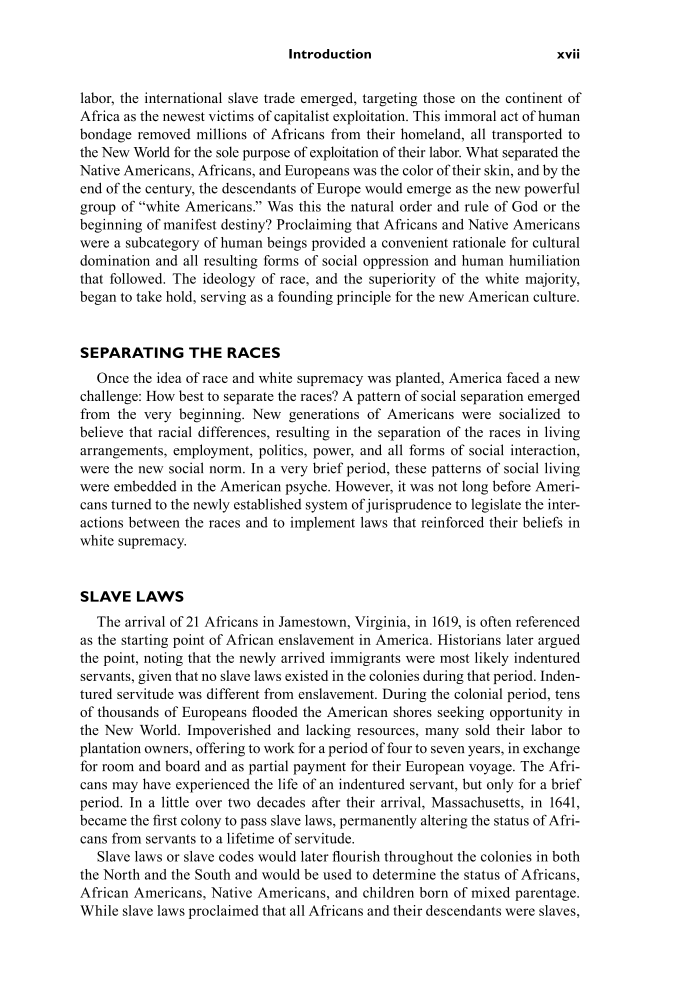Introduction xvii labor, the international slave trade emerged, targeting those on the continent of Africa as the newest victims of capitalist exploitation. This immoral act of human bondage removed millions of Africans from their homeland, all transported to the New World for the sole purpose of exploitation of their labor. What separated the Native Americans, Africans, and Europeans was the color of their skin, and by the end of the century, the descendants of Europe would emerge as the new powerful group of “white Americans.” Was this the natural order and rule of God or the beginning of manifest destiny? Proclaiming that Africans and Native Americans were a subcategory of human beings provided a convenient rationale for cultural domination and all resulting forms of social oppression and human humiliation that followed. The ideology of race, and the superiority of the white majority, began to take hold, serving as a founding principle for the new American culture. SEPARATING THE RACES Once the idea of race and white supremacy was planted, America faced a new challenge: How best to separate the races? A pattern of social separation emerged from the very beginning. New generations of Americans were socialized to believe that racial differences, resulting in the separation of the races in living arrangements, employment, politics, power, and all forms of social interaction, were the new social norm. In a very brief period, these patterns of social living were embedded in the American psyche. However, it was not long before Ameri- cans turned to the newly established system of jurisprudence to legislate the inter- actions between the races and to implement laws that reinforced their beliefs in white supremacy. SLAVE LAWS The arrival of 21 Africans in Jamestown, Virginia, in 1619, is often referenced as the starting point of African enslavement in America. Historians later argued the point, noting that the newly arrived immigrants were most likely indentured servants, given that no slave laws existed in the colonies during that period. Inden- tured servitude was different from enslavement. During the colonial period, tens of thousands of Europeans fl ooded the American shores seeking opportunity in the New World. Impoverished and lacking resources, many sold their labor to plantation owners, offering to work for a period of four to seven years, in exchange for room and board and as partial payment for their European voyage. The Afri- cans may have experienced the life of an indentured servant, but only for a brief period. In a little over two decades after their arrival, Massachusetts, in 1641, became the fi rst colony to pass slave laws, permanently altering the status of Afri- cans from servants to a lifetime of servitude. Slave laws or slave codes would later fl ourish throughout the colonies in both the North and the South and would be used to determine the status of Africans, African Americans, Native Americans, and children born of mixed parentage. While slave laws proclaimed that all Africans and their descendants were slaves,
Document Details My Account Print multiple pages
Print
You have printed 0 times in the last 24 hours.
Your print count will reset on at .
You may print 0 more time(s) before then.
You may print a maximum of 0 pages at a time.





























































































































































































































































































































































































































































































































































































































































































































































































































































































































































































































































































































































